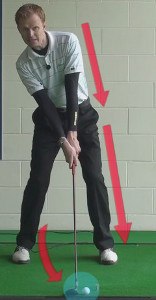Hitting a 3-wood from the fairway can be a valuable weapon in a golfer's arsenal. It offers a balance between distance and control, allowing players to reach long par-4s or par-5s while still maintaining accuracy. To ensure successful shots with a 3-wood from the fairway, here are some essential things to do and what not to do: 
Things to Do:
- Set up properly: Position the ball slightly forward in your stance, just inside your front heel. This promotes a sweeping strike with the 3-wood, ensuring solid contact and an upward strike on the ball.
- Maintain balance and tempo: Focus on maintaining a balanced and smooth swing tempo. Keep your weight centered throughout the swing, with a slight transfer to your front foot during impact.
- Swing on a shallow plane: Unlike a driver, which is typically hit on a more upward angle, a 3-wood requires a shallower swing plane. Focus on sweeping the clubhead through the ball with a slight descending blow, allowing for a clean strike and optimal launch.
- Generate power from rotation: Utilize your core and rotational power to generate clubhead speed. Initiate the downswing with a controlled hip rotation, followed by a synchronized upper body turn. This rotational power helps maximize distance with the 3-wood.
- Maintain a light grip pressure: A light grip pressure promotes a free and fluid swing. Avoid gripping the club too tightly, as it can restrict your wrist action and lead to a tense swing. Find a grip pressure that allows for a smooth release of the clubhead through impact.
Things not to do:
- Avoid a steep angle of attack: Unlike hitting with an iron, avoid taking a divot with a 3-wood. A steep angle of attack can lead to fat shots or poor contact. Focus on a shallow strike, sweeping the ball off the fairway rather than taking a large divot.
- Don't overswing: Trying to hit the 3-wood with excessive force often leads to loss of control and poor contact. Maintain a smooth, controlled swing, allowing the club's loft and design to do the work. Trust in the club's design to generate distance.
- Avoid excessive body movement: While generating power through rotation is crucial, avoid excessive lateral or vertical movement during the swing. Maintain stability and balance, minimizing any unnecessary shifting of weight or head movement.
- Don't rush the transition: A smooth transition from the backswing to the downswing is crucial for solid contact. Avoid rushing or jerky movements, as they can lead to timing issues and inconsistent strikes. Focus on a smooth and fluid transition for optimal results.
- Avoid ball position too far back: Placing the ball too far back in your stance can result in a descending blow, leading to a low trajectory or topped shots. Ensure the ball is positioned slightly forward to allow for a clean, sweeping strike.
Remember, these guidelines are general recommendations, and individual swing characteristics may require slight adjustments. It is always beneficial to work with a golf professional to fine-tune your technique and address any specific swing issues. With practice and proper technique, hitting a 3-wood from the fairway can become a reliable and effective shot in your golf game.





